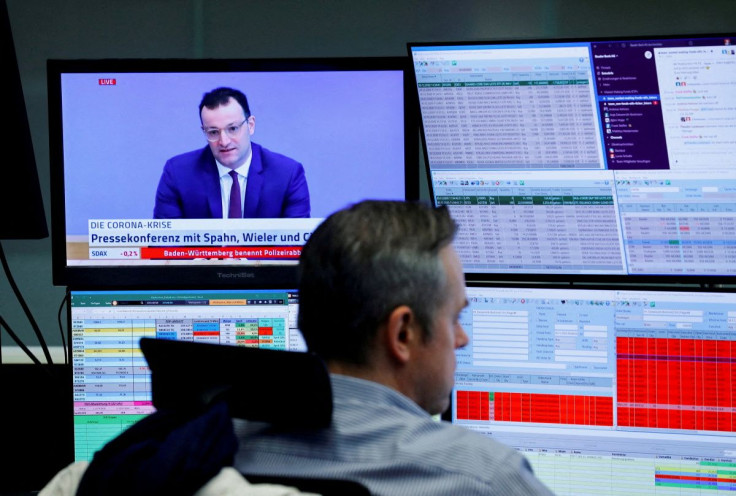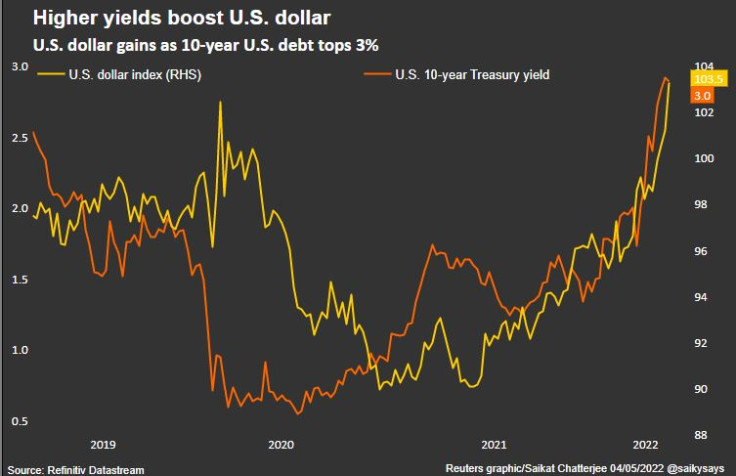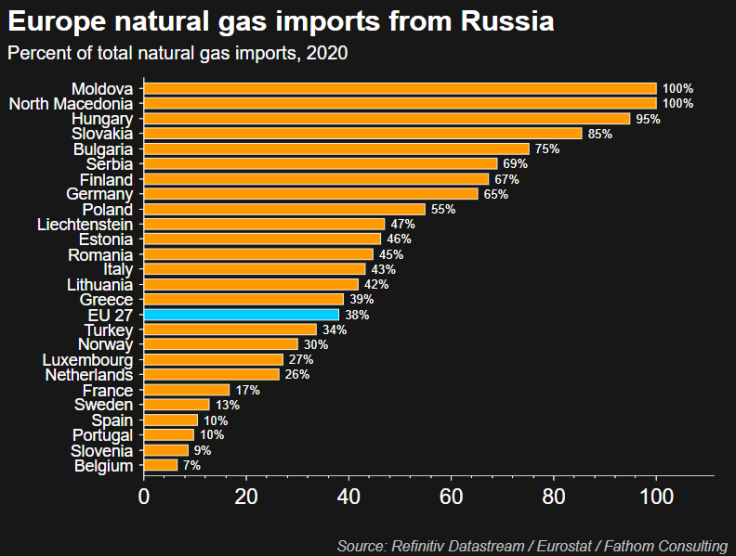Stocks Rally After Fed Hikes Rates, Crude Jumps

U.S. stocks rallied and Treasury yields fell on Wednesday after the Federal Reserve raised interest rates by 50 basis points as expected and said it would begin to reduce its balance sheet in June in a decision seen as less hawkish than some feared.
The U.S. central bank set its federal funds rate to a range between 0.75% and 1% in a unanimous decision that gave the benchmark overnight rate its biggest bump in 22 years.
There was little initial reaction to a policy statement that mostly met expectations. But when Fed Chair Jerome Powell said the Fed was not "actively considering" a 75 basis-point rate hike, stocks rallied and bond yields reversed earlier gains.
"The key turning point was when he said they were not actively considering 75 bps," said Brian Jacobsen, senior investment strategist at Allspring Global Investments.
"At worst, the Fed wants to meet market expectations. At best, they want to go slower or lower than what the market was pricing," he said.
The dollar index fell 0.86% and the euro rose 0.89% to $1.0614, while the yield on 10-year Treasury notes fell 3.1 basis points to 2.927%.
Risk assets rallied, causing the U.S. dollar to "soften a touch, a classic 'buy the rumor, sell the fact' trade, while also sparking demand for Treasuries," said Michael Brown, head of market intelligence at Caxton in London.
"Although hawkish in its own right, the decision is somewhat dovish compared to the market's lofty expectations," he said.
MSCI's gauge of stocks across the globe closed up 1.67%. On Wall Street, the Dow Jones Industrial Average rose 2.81%, the S&P 500 gained 2.99% and the Nasdaq Composite added 3.19%. [.N] Stocks closed lower in Europe on disappointing earnings and investor uncertainty before the Fed's decision. The pan-European STOXX 600 index dropped 1.1%, with retailers leading sector losses, and major regional indexes also fell.
Germany's 10-year government bond traded near multi-year highs, hitting its highest yield since June 2015 at 1.036%, after European Central Bank board member Isabel Schnabel said a rate hike in July was possible.
Overnight in Asia, many Chinese and Japanese stock markets were closed.
Oil prices rose about 5% as the European Union, the world's largest trading bloc, spelled out plans to phase out imports of Russian oil, offsetting demand worries in top importer China.
European Commission President Ursula von der Leyen proposed a phased oil embargo on Russia over its war in Ukraine, as well as sanctioning Russia's top bank, in a bid to deepen Moscow's isolation.
U.S. crude futures gained $5.40 to settle at $107.81 a barrel and Brent settled up $5.17 at $110.14.
Gold bounced higher after Powell flagged risks to the economy from soaring inflation. Earlier, U.S. gold futures settled down 0.1% at $1,868.8 an ounce.
The global monetary tightening cycle has reached a symbolic milestone, with yields on German, British and U.S. 10-year government debt topping 1%, 2% and 3% respectively, levels not seen in years. That in turn has raised borrowing costs for businesses and households.
The Bank of England is expected to lift British rates on Thursday by a quarter of a percentage point, which would be its fourth hike in a row to quell surging prices.
Graphic: US dollar and treasury -

The Aussie dollar gained as much as 1.3%, and local shares fell, after the Australian central bank's bigger-than-expected 25 basis-point rate increase on Tuesday.
Bitcoin rose 5.68% to $39,871.90 after earlier trading lower.
Graphic: Europe's natural gas imports from Russia -

© Copyright Thomson Reuters 2024. All rights reserved.




















